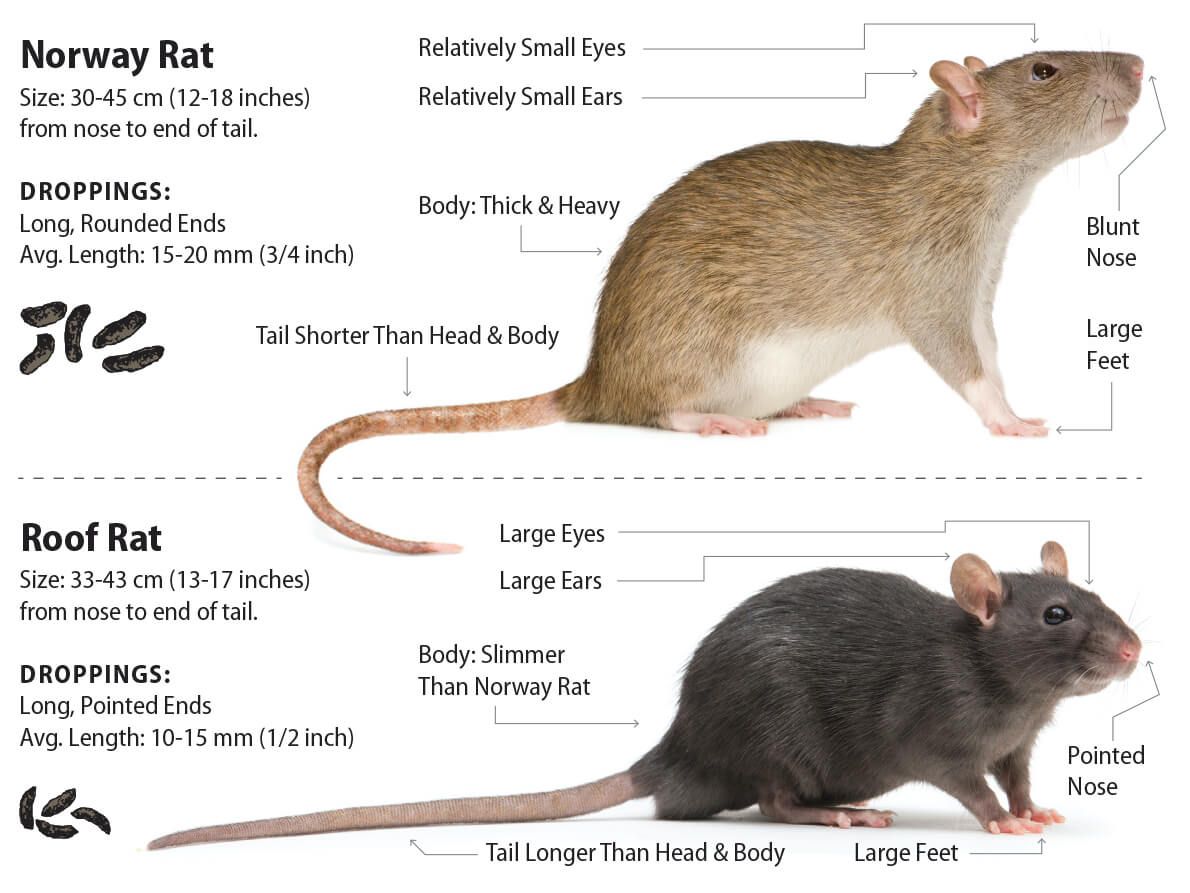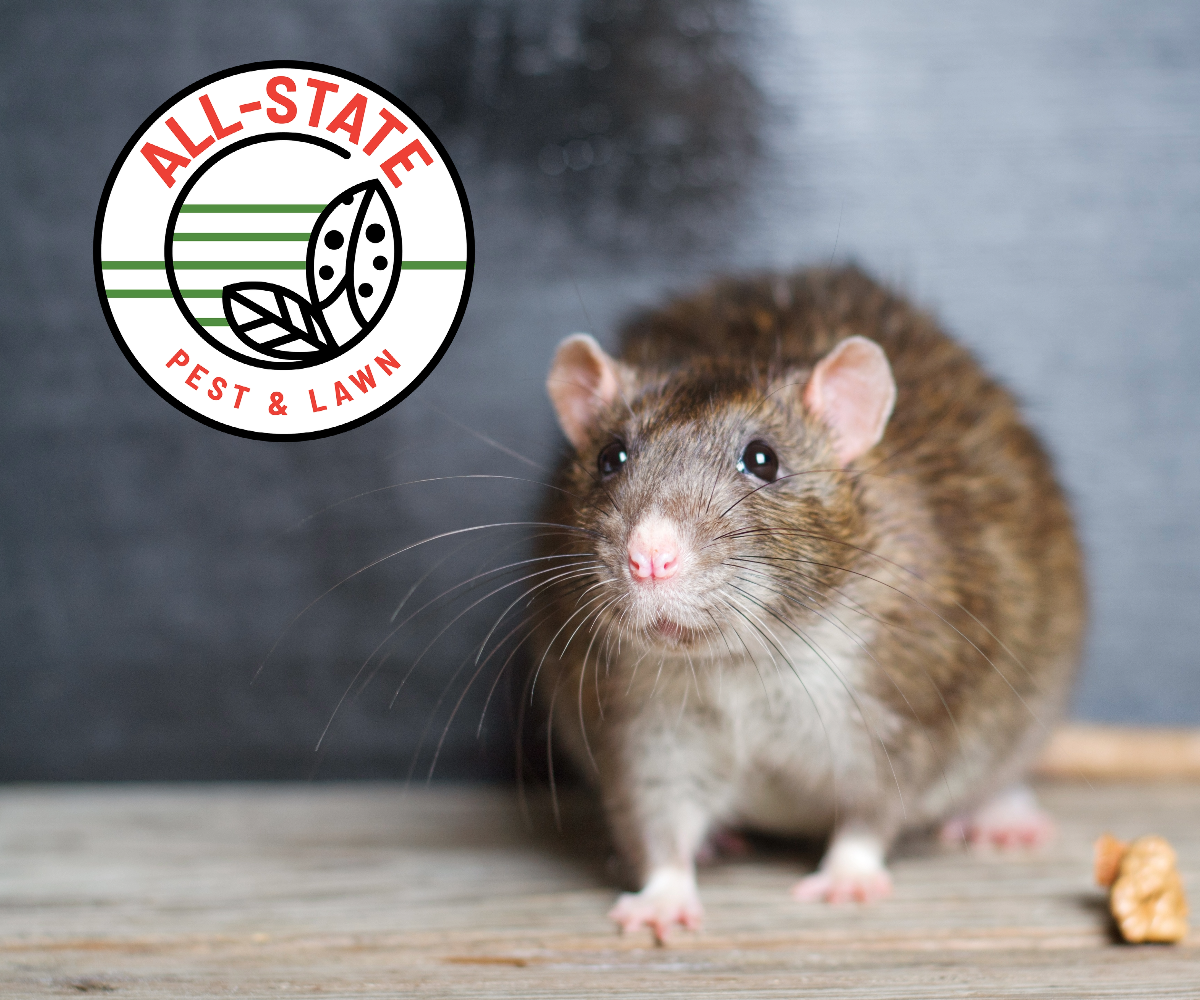Norway and Roof Rats: Wintertime Tendencies in Residential Neighborhoods
As winter sets in and temperatures drop, many of us seek warmth indoors, but so do some uninvited guests—like Norway rats and Roof rats. These resilient creatures have adapted well to colder climates, often becoming more active during frigid months as they seek shelter, food, and warmth inside our homes. In residential neighborhoods, the onset of winter can mark the beginning of an uptick in rodent activity. Understanding their tendencies and taking preventative measures can help homeowners protect their homes and property.
Norway and Roof Rats: The Difference
Before we dive into their winter behavior, it’s essential to distinguish between these two types of rats, as they tend to differ in habitat preferences:
- Norway rats (Rattus norvegicus): Also called “brown rats,” these rats prefer to live in burrows near the ground or in basements, sewers, and other low-lying areas. They are more commonly found in sewers and underground spaces during winter.
- Roof rats (Rattus rattus): Known as “black rats,” these are more agile climbers and prefer nesting in higher places, like attics, rafters, or rooftops. They are more likely to invade upper levels of homes and buildings during colder months.
Both rats are opportunistic feeders, meaning they’ll take advantage of any available food source. During winter, as the weather becomes more severe, they move closer to human settlements in search of warmth, shelter, and sustenance.
Why Do Rats Seek Shelter in Winter?
As temperatures plummet, the food sources that Norway and Roof rats depend on become scarce outdoors. They start to look for warmth and safety inside buildings, particularly those with easy access points. Rats are great at squeezing through small openings, even as narrow as a quarter of an inch, so homes that have cracks, gaps, or loose vents become prime targets for infestation.
They are also looking for food, especially items that are easy to access and abundant, such as grains, pet food, fruit, or garbage. Kitchens, pantries, and trash bins become prime feeding grounds during winter months.
Signs of an Infestation in Your Home
If you suspect rats are invading your home during the cold season, there are several signs to watch for:
- Gnaw marks: Rats need to gnaw on materials to keep their teeth from growing too long. You may notice bite marks on food packaging, furniture, or even cables.
- Droppings: Rat droppings are small, dark, and cylindrical usually ½ to ¾ of an inch with either blunt or pointed ends. Finding droppings near food sources or entry points can indicate their presence.
- Footprints and tracks: Snow and dust can reveal rat footprints, especially near entryways or around areas where they frequently travel.
- Noises: Rats are nocturnal creatures and are most active at night. If you hear rustling or scurrying noises in your attic or walls, it could be an indication that they’ve found shelter.
- Nests: Roof rats and Norway rats will create nests out of materials like insulation, paper, and fabric. If you notice shredded material in hidden areas of your home, it may be a sign of a nest.
How to Prevent Rat Infestations During Winter
The best way to handle rat problems in residential areas is through prevention. If you’re proactive, you can minimize the likelihood of an infestation during frigid temperatures.
- Seal Entry Points: Inspect your home for any cracks or holes, especially around windows, doors, vents, and utility lines. Seal gaps with materials that rats can’t gnaw through, such as steel wool or metal mesh.
- Trim Trees and Shrubs: Roof rats are climbers, so overhanging branches can provide access to your roof. Trim trees and shrubs that touch the sides of your home to discourage rats from entering through the roof.
- Keep Food Sources Tightly Sealed: Store food in airtight containers, and make sure that garbage bins are tightly sealed. Don’t leave pet food out overnight and always clean up any crumbs or spills immediately.
- Maintain a Clean Yard: Remove debris and clutter in your yard that can serve as nesting areas for rats. Keep firewood stored away from your home, as rats like to hide in wood piles.
- Call a Professional: If an infestation persists, consider contacting a pest control expert such as All-State Pest & Lawn. Professionals can provide rodent-proofing services, identify weak points in your home’s defenses, and eliminate rats effectively.
The Dangers of a Rat Infestation
Rats may seem like a nuisance, but they can cause significant damage to your home. Norway and roof rats can chew through electrical wires, insulation, and even structural materials, leading to costly repairs. Additionally, they are known to spread diseases such as salmonella, leptospirosis, and hantavirus, which can pose serious health risks to humans and pets.
Conclusion
As temperatures drop, Norway and roof rats seek refuge in the warmth of our homes. By being vigilant and taking preventive measures, homeowners can avoid the frustration and damage caused by these resilient creatures. If you’re dealing with a rat issue, remember that swift action is key—ensure your home is sealed, food sources are controlled, and rodent traps are in place to protect your family from wintertime intruders.
By staying proactive, you can maintain a rat-free home, even during the coldest months.

